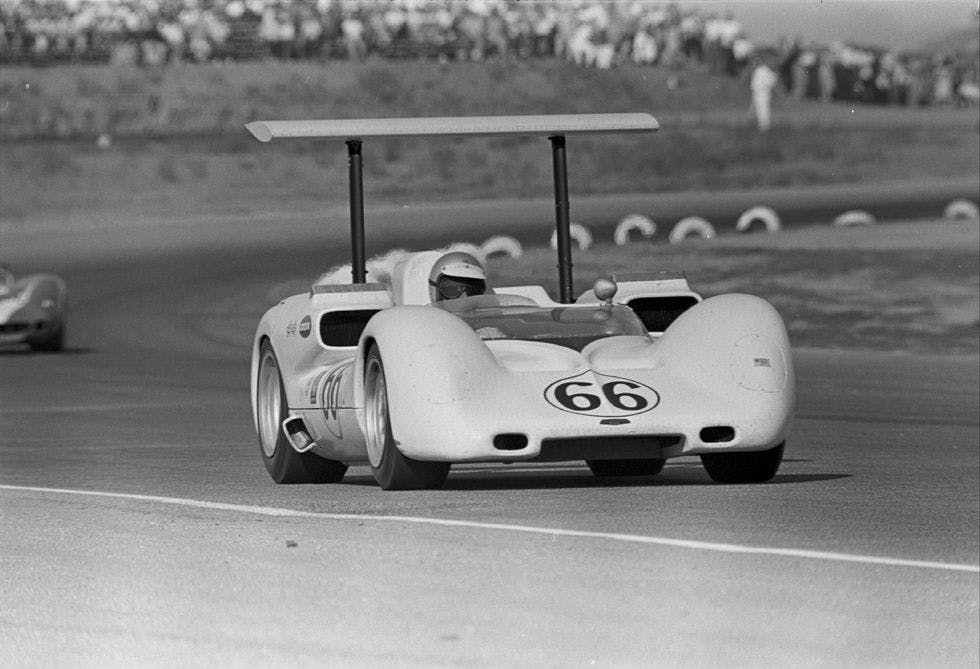Never Stop Driving #50: Rearranging your guts
Humans, as I’ve often written, are wonderfully creative and resourceful. While some bemoan new electric-vehicle technology, others are leveraging it to fantastic effect. A case in point is the wild machine Hagerty’s Henry Catchpole test drove in his latest video.
It’s called the McMurty Speirling, a single-seat electric-powered road rocket. The 60-kilowatt-hour battery pack, which holds enough energy to run a typical household for days, powers both electric motors to turn the wheel and, interestingly, a pair of fans. Those fans literally suck the car to the road, generating massive downforce that helps the tires grip the asphalt like superglue.
Catchpole’s a skilled driver, yet the capabilities of the McMurty, specifically the forces it can generate while cornering, unnerved him. The skin on his face visibly distorted as he tried to drive a corner at the limit of the car’s grip. Driving a corner at extremely high speed is like being in a one of those pilot-training centrifuges. It’s a difficult experience to describe because it happens so fast but from my own experience driving high-downforce cars, I was shocked at how quickly my neck muscles fatigued and I could feel my internal organs moving from side to side. Formula 1 cars generate similar grip to the McMurty and the drivers train like mad to cope. There’s a video of F1 driver Fernando Alonso showing off his freakily strong neck by using the muscles to crack open a walnut. That video might be fake but the point it makes it legit: Just holding your head in place while driving a high-downforce car is a strain.
F1 cars need high speed to generate big downforce, but the McMurty does the same at low speeds thanks to its fans. Cars using fans for aerodynamic effect are not new. We once interviewed racing pioneer Jim Hall, who built a fan car dubbed the “sucker car,” in 1970. Powering those fans required a second gas-powered engine. The fans of the McMurty share the energy source, the battery pack, with the motors that drive the wheels. Those fans by the way, are far more powerful than the ones that cool a radiator and consume some 80 horsepower each.

Without the high energy density of today’s EV batteries, there would be no McMurty. And yeah the car has some drawbacks in that it can’t go very far, about 10 laps with the fans running full blast, and it costs nearly a million dollars, but I think it’s wicked cool anyway.
Passion for the automobile and of course speed induces incredible ingenuity and creativity. Hagerty Drivers Club member Jim Murphy recently shared this website that details the build of a, ahh, Willys Jeep race car. My colleague Don Sherman pens a regular series on our website called Homegrown that covers amateur projects. They are amazing. One of my favorites is the 30-year build of a Can Am racer for the street called the JS Special. Also, check out this video of Sam Albert and his Ferrari-powered Subaru rally. Mr. Albert, I salute you.
Garage tinkerers often evolve into small-volume manufacturers. Carroll Shelby may not have been a tinkerer, but he knew the recipe for compelling cars. One of his last cars, a 1999 Series 1 that was once owned by Tony Stewart, is currently up for auction on Hagerty Marketplace. I never drove a Series 1, but the car for sale with is yellow paint and black stripes strikes me as an underrated design triumph. The thing is gorgeous.
If you’d like to say thanks for this newsletter and all of Hagerty’s free content, one way you can do so is by joining the Hagerty Drivers Club or telling a friend. There’s now a zero-risk free 60-day free trial.
See you next week!
Hear from Larry every Friday by subscribing to this newsletter.
***
Check out the Hagerty Media homepage so you don’t miss a single story, or better yet, bookmark it.


The Jim Hall vacuum car had a second smaller 45hp. engine driving the fans. I believe the displacement was counted toward the total allowed.
Regarding the Chaparral Can-Am fan can of Jim Hall’s, I thought its fan was driven by a snowmobile engine, thus making it independent of the primary, Chevy big-block power plant.
Ahh drat. Dang. Made a mistake. Will fix.
The car pictured is also not the fan car in question. You’ll want the 2j.
The “down draft by fan” idea is very interesting. I would have liked to have seen more about the engineering involved in it.
Would speed eventually create the same down force?
I saw JimHall’s Chaparral “sucker car” run at Watkins Glen driven by Mario Andretti. The fans were driven by a separate snow mobile engine. It really “honked”!
Jim Hall was a genius and a maverick in the mold of Smokey Yunick. It’s too bad that the governing bodies squelched him – no telling where road racing might have been by now…
Great video, b-t-w. This thing seems like a natural as a Batmobile – no need to Bat-a-Rang a cable around a light pole to turn a 90 degree corner at speed…
Not to put too fine a point on the “rearranging your guts” thing, but I wonder if there would actually be some danger of actual physiological damage in driving this car for 10 full laps?
Larry,
Right decade, wrong continent (and automotive genius): Gordon Murray’s 1978 Brabham BT46B used its engine to drive the downforce-producing fan. This was actually just one of many innovative concepts on this car that included carbon brake discs (before they were a thing on race cars) and flat-panel heat exchangers in the place of radiators (which reverted to regular radiators after the heat exchanger concept could not be made to cool the car effectively).
Newey may be an aerodynamics genius, but I’ll take Murray any day of the week for his out-of-the-box thinking across the entire package.